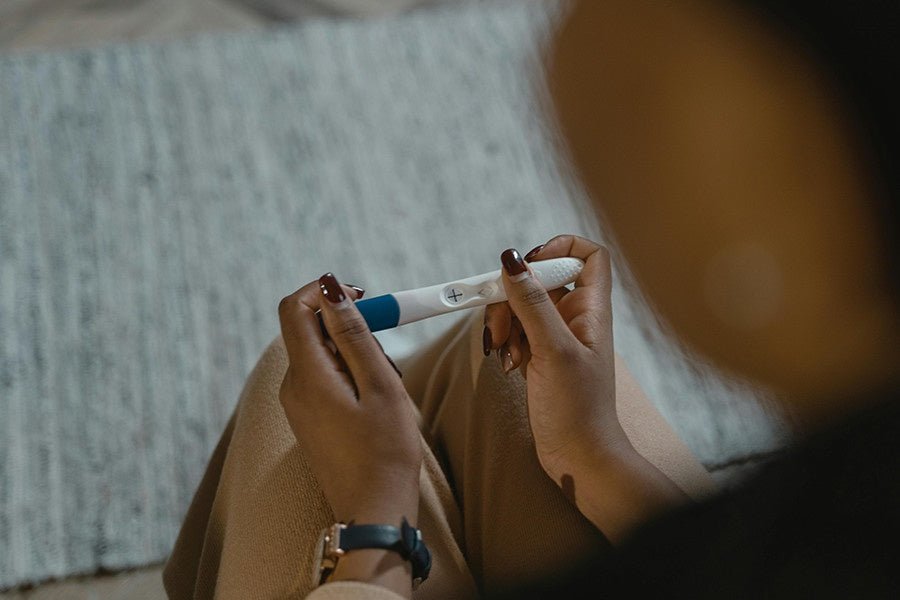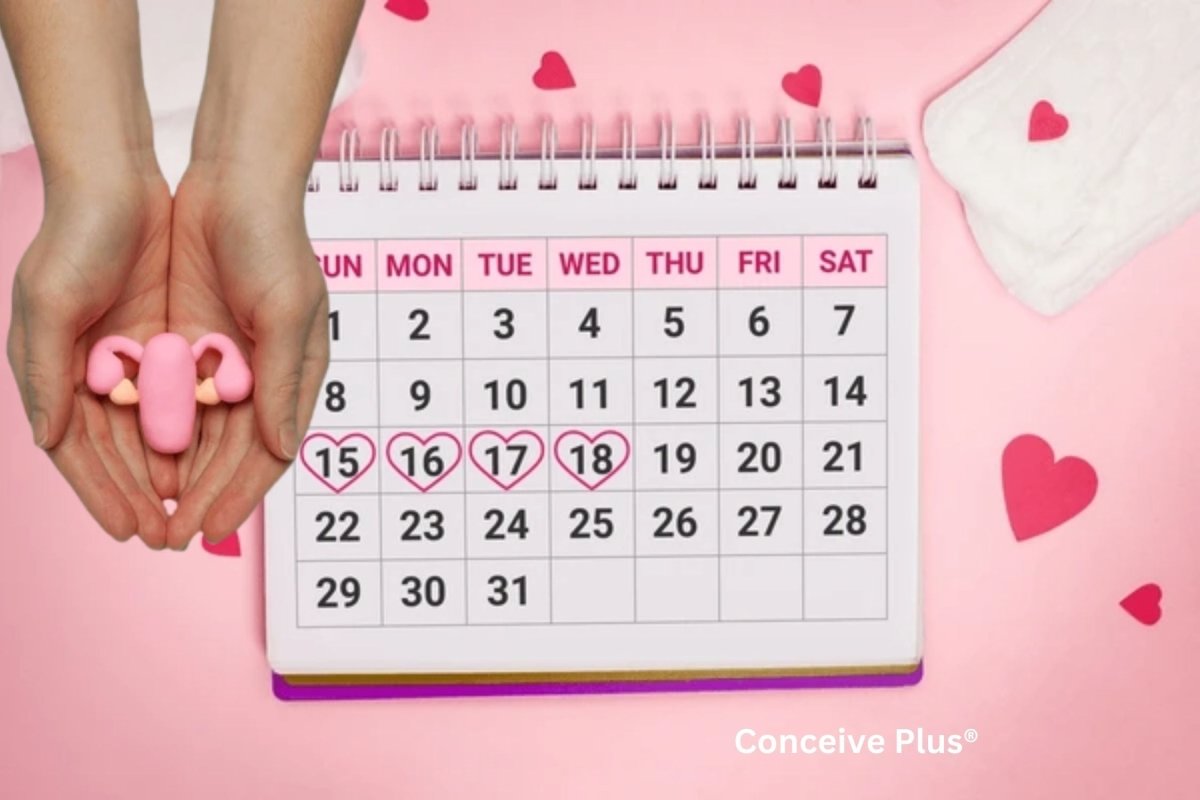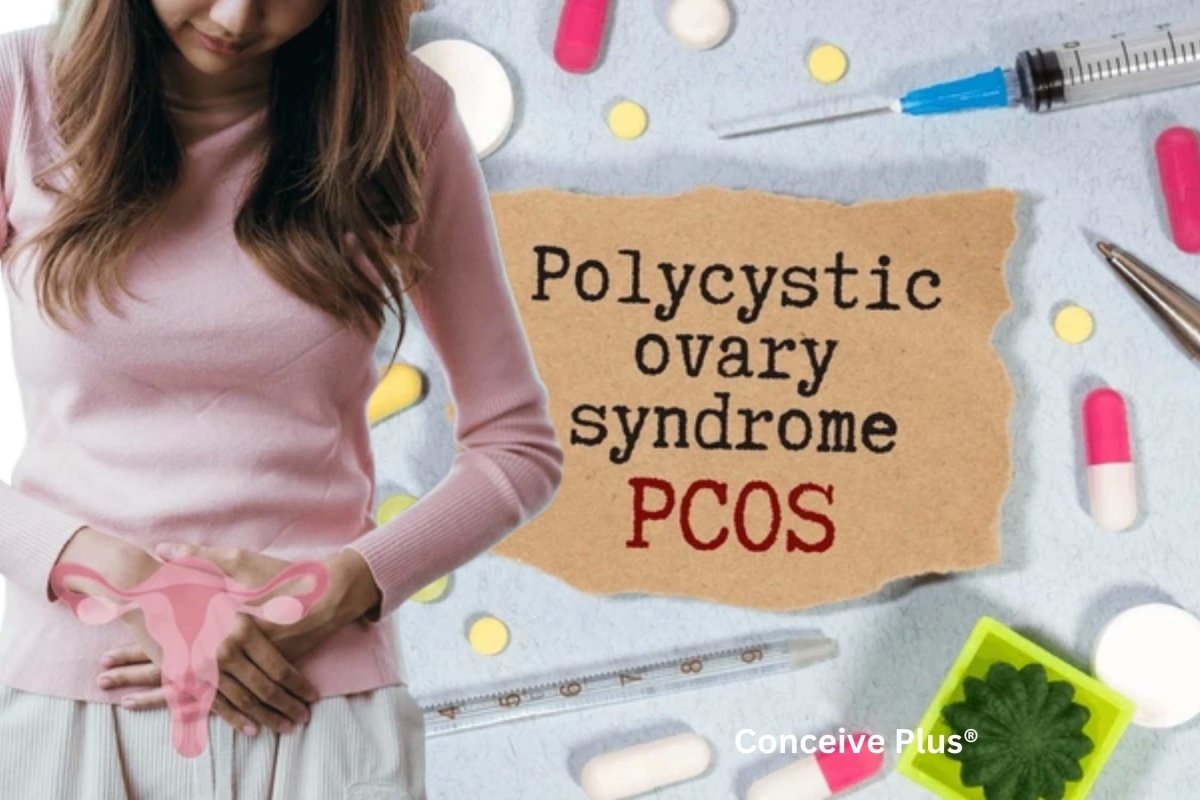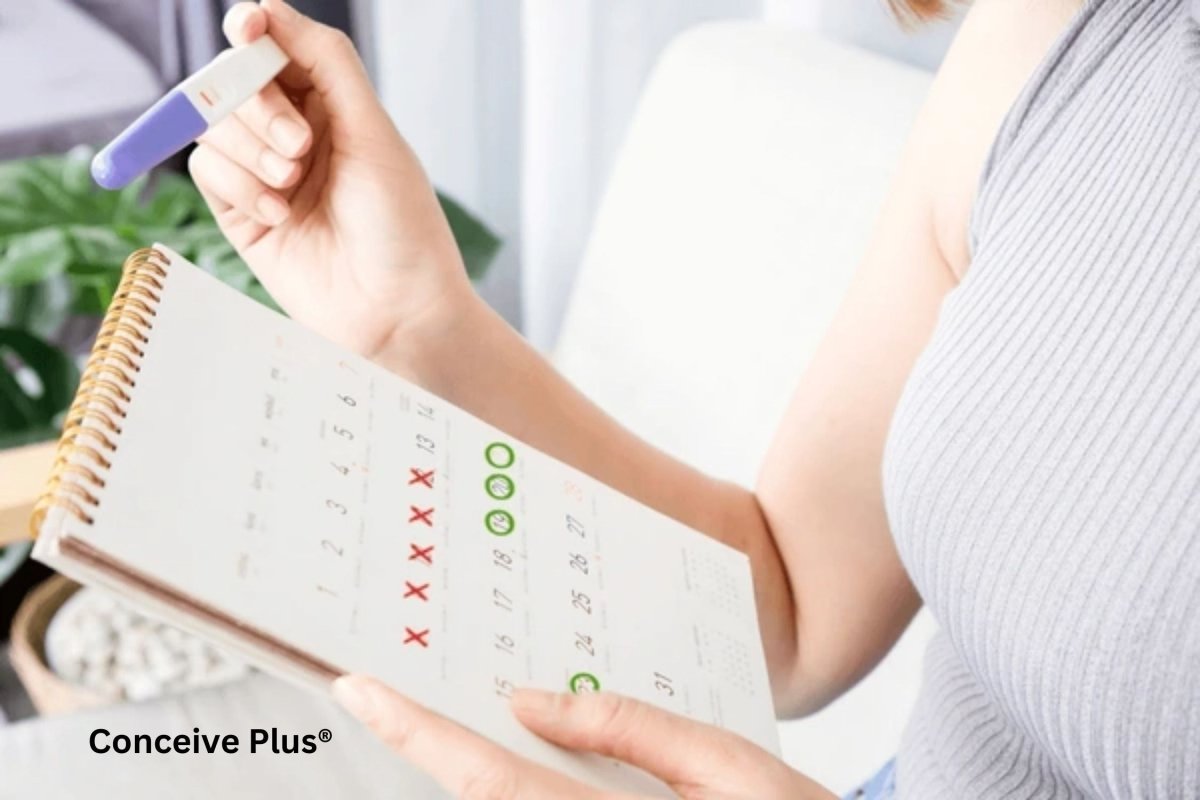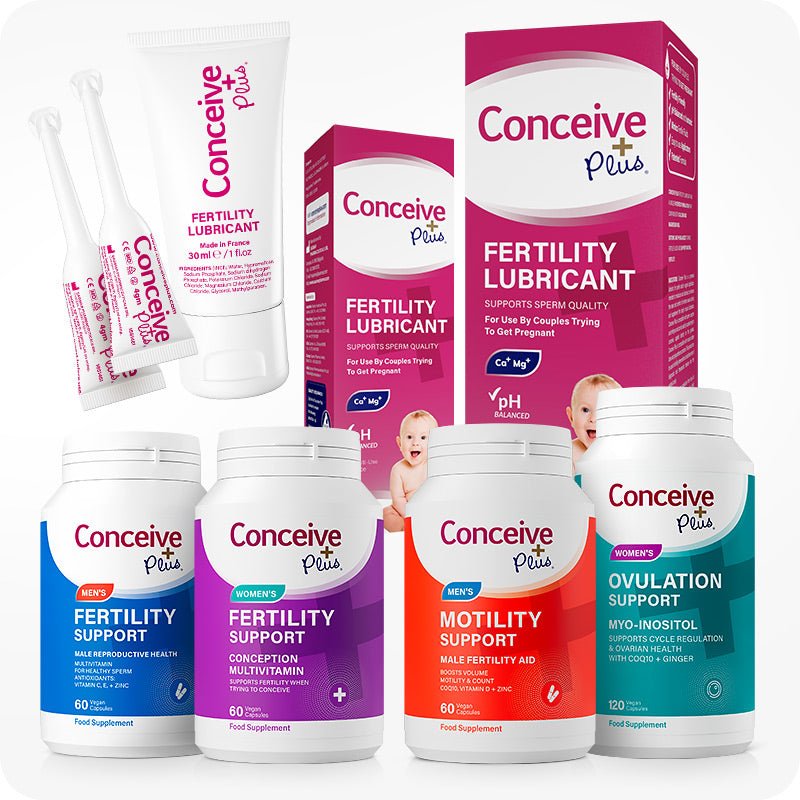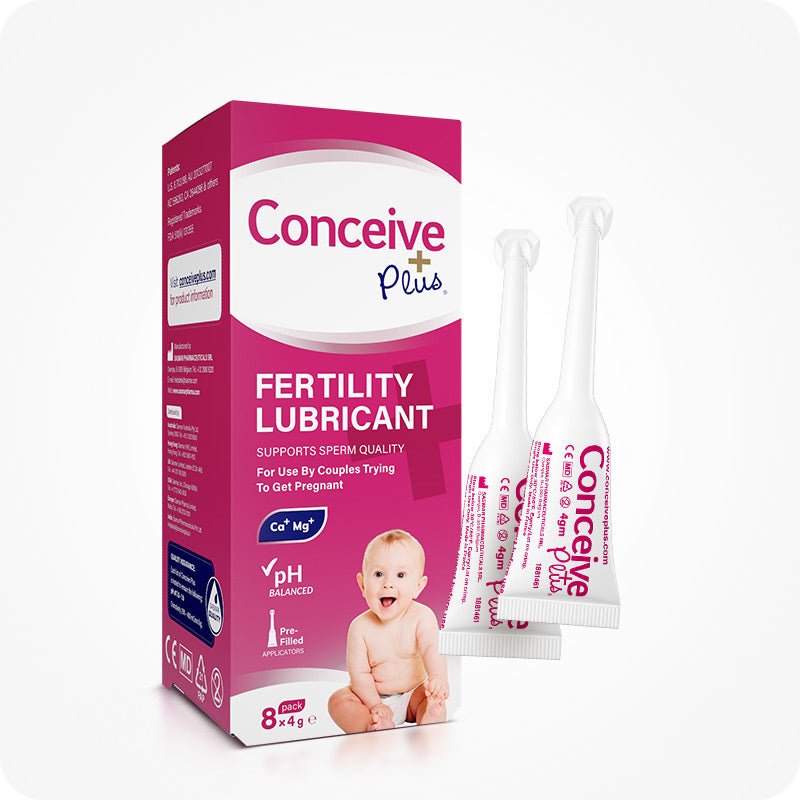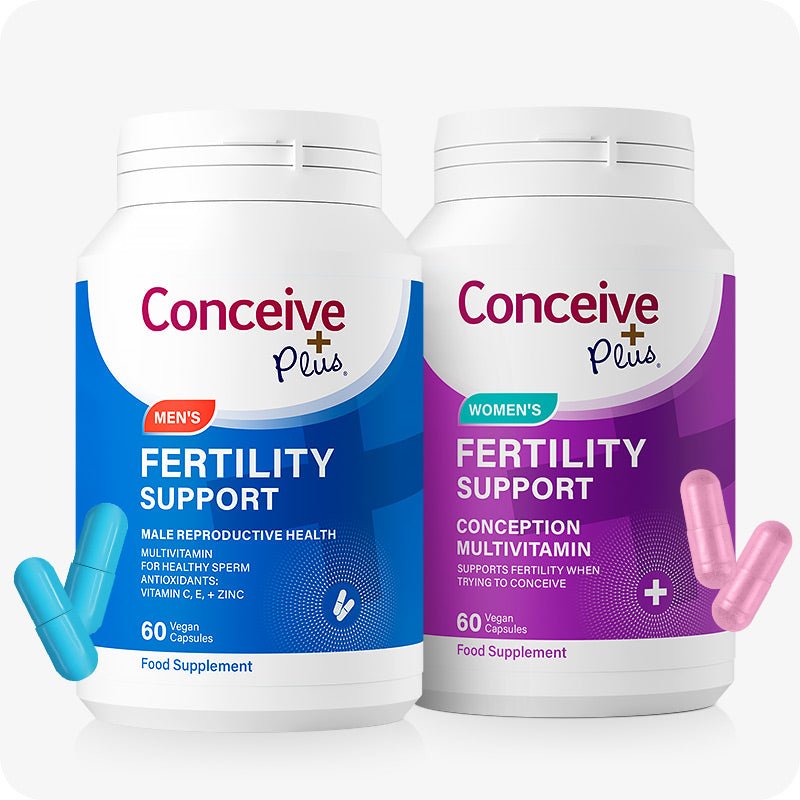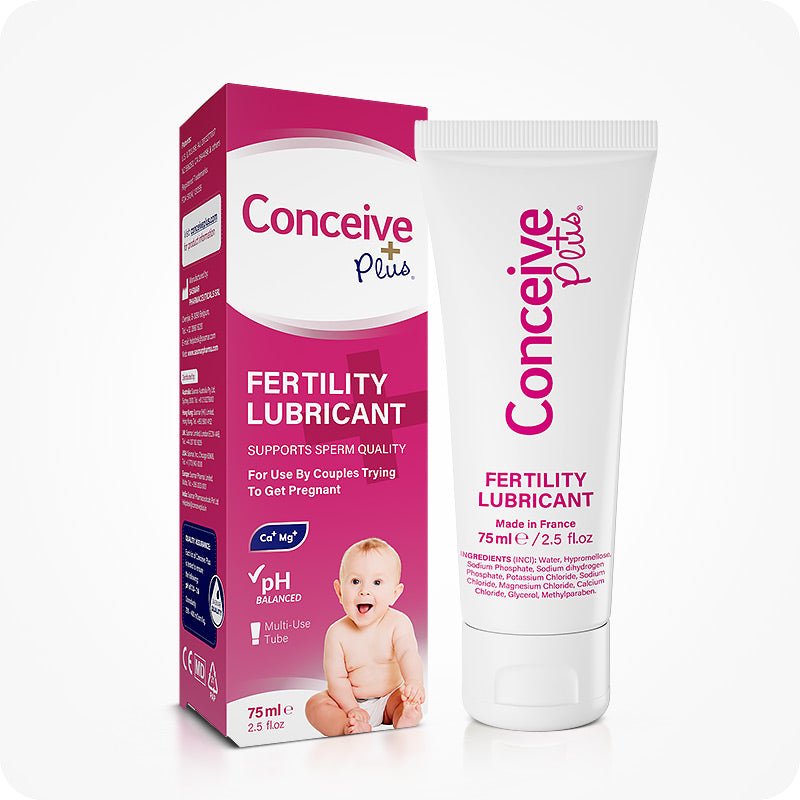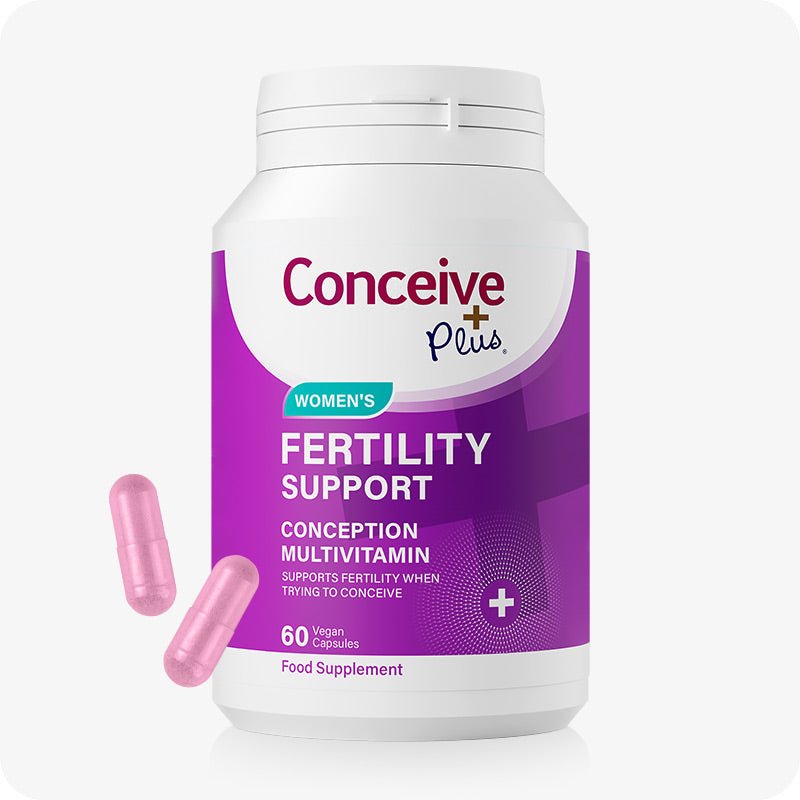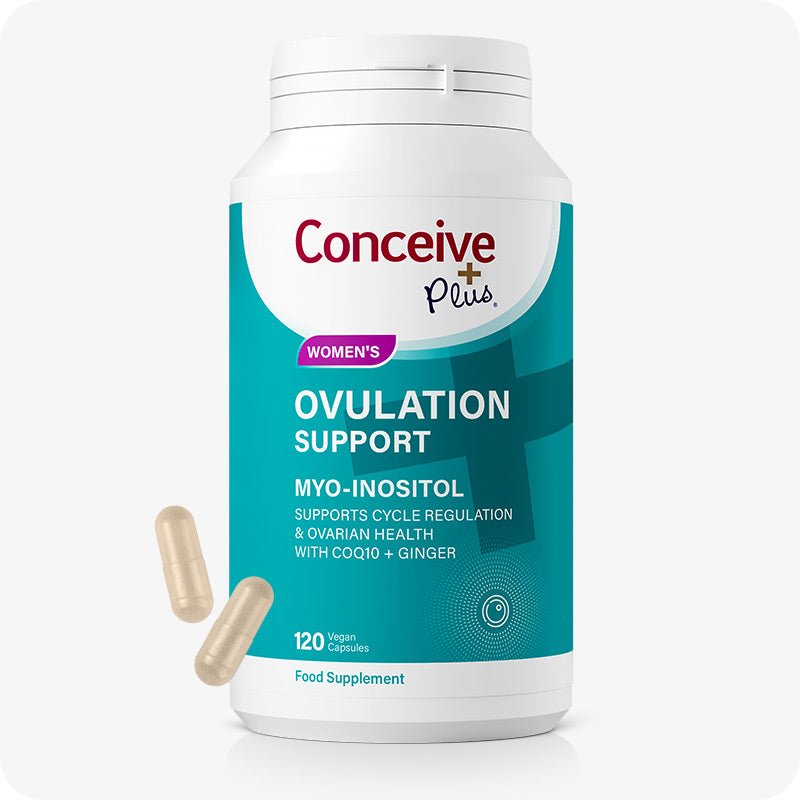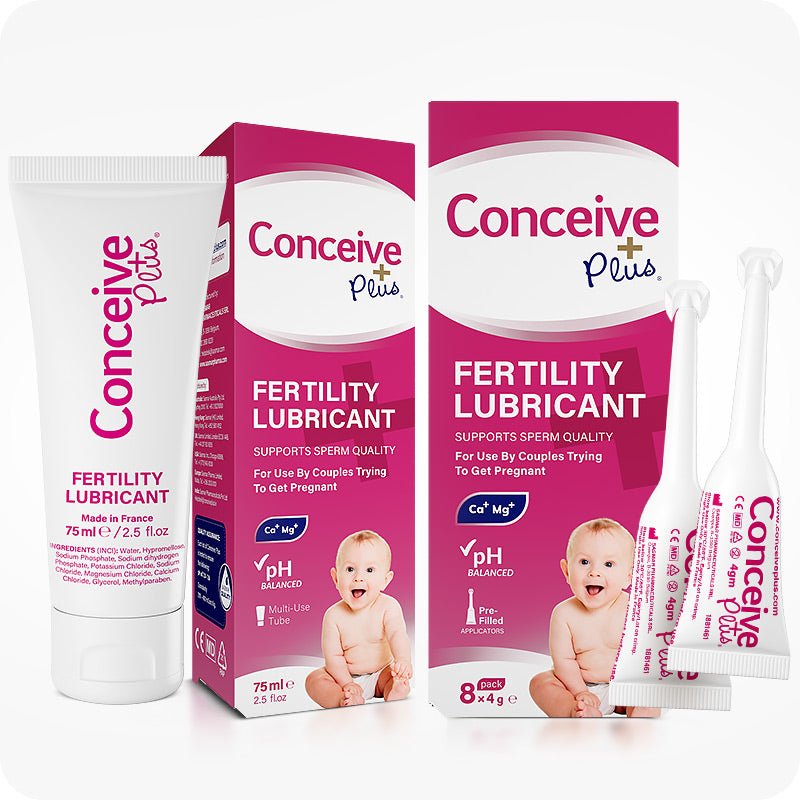Ovulation Bloating: Why it Occurs & How to Relieve It
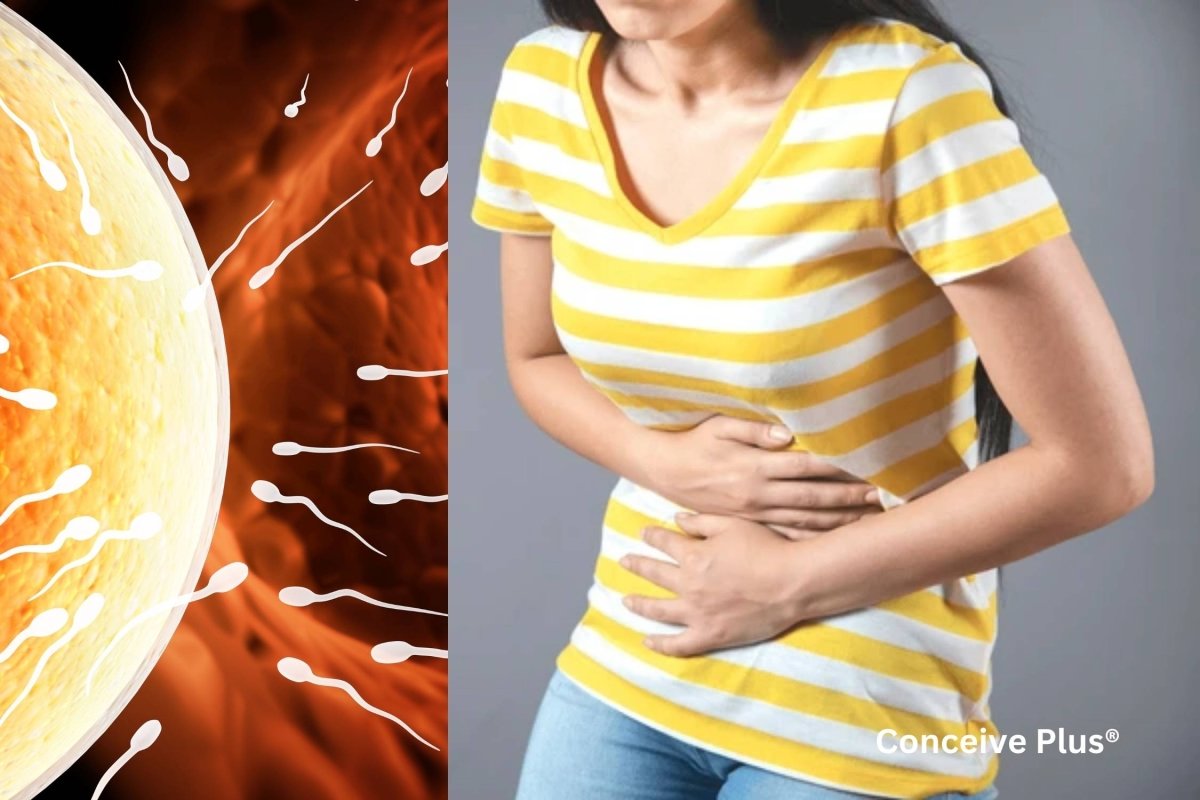
Ovulation bloating is common and happens to many women once a month as hormone levels change to release an egg for fertilisation. Other symptoms of ovulation can include breast tenderness, food cravings, and pain on one side of the abdomen.
Read on to understand why bloating during ovulation occurs, how you can relieve it, and how you can use ovulation symptoms to identify your fertile window when trying to conceive.
What Does Bloating Around Ovulation Feel Like?
Abdominal bloating from ovulation can cause the belly to feel fuller or bigger than usual for a few hours or 1-2 days. For some women, their tummy distends to the point that they find it challenging to tie pants that normally fit outside ovulation.
Abdominal rumbling is also common around ovulation and an increase in digestive gases can also occur [1].
Cramping, or mittelschmerz, a German term which translates as ‘middle pain’ is also usual around ovulation. Normally occurring mid-way through the menstrual cycle, mittelschmerz is felt on one side of the abdomen like a dull pain, discomfort, or cramp.
Only one ovary ovulates at a time, and mittleschmerz occurs on the side of the body where that ovary is located.
Ovulation Explained
Throughout the menstrual cycle, the female body undergoes several hormone changes. These changes occur to support the release of an egg (ovulation), fertilisation, and implantation - and if fertilisation doesn’t occur, menstruation [2].
After the first day of menstruation, oestrogen levels begin to rise in tandem with follicle-stimulating hormone (FSH). FSH encourages the ovaries to start producing eggs within follicles in preparation for ovulation.
At the same time, rising oestrogen levels ensure the uterus lining (endometrium) is ready for the implantation of a fertilised egg.
As this occurs, increasing oestrogen levels also alter the cervical mucus to make it a more sperm-friendly environment. This mucus, resembling raw egg whites, helps sperm to swim through the cervix and survive for up to five days in the fallopian tubes.
Somewhere around days 11-16 of a regular 28-day menstrual cycle, high oestrogen levels signal a surge in luteinising hormone (LH). This LH surge prompts the most dominant follicle to burst and release a mature egg into the fallopian tube where it will survive for 12-24 hours.
The ruptured follicle then closes and forms a mass of cells known as the corpus luteum [3] which produces progesterone to support early pregnancy.
Once the egg enters the fallopian tube and the corpus luteum forms, ovulation has occurred.
If you're curious about how do ovulation tests work to accurately pinpoint your fertile window, check out our comprehensive guide for all the details.
Why You Feel Bloated Around Ovulation
Increased oestrogen levels are largely responsible for bloating during ovulation. This is why women generally experience abdominal bloating 3-4 days before ovulation occurs [4].
In addition to breast tenderness and mood changes, high oestrogen levels can also affect the digestive tract. For example, slowed digestion, water retention, loose stools, and increased digestive gases or flatulence can be more frequent around ovulation, and each can contribute to bloating.
Water retention results in the body storing excess sodium (salt), for instance, and is a frequent cause of bloating. Other factors linked to bloating during ovulation are the release of prostaglandins [5] and the physical aspect that the dominant follicle is at its largest before ovulation.
Sometimes, ovulation bloating is exacerbated by an underlying intolerance to certain foods. If you experience regular abdominal bloating and it worsens when you’re ovulating, consult with a nutritionist to identify the offending foods.
How to Relieve Bloating During Ovulation
Although ovulation bloating is temporary and usually subsides once ovulation occurs, it is uncomfortable, and several approaches can help relieve it.
Water & Diet
Drinking plenty of water around ovulation can help flush retained sodium and relieve bloating. It’s also best to avoid foods that cause gas such as beans, lentils, cabbage, dairy products, or carbonated drinks.
Gentle Exercise
Understandably, exercise is not something you want to do when feeling bloated but gentle exercise is known to improve digestion. Given the effects of increased oestrogen on the digestive tract around ovulation, gentle exercise like yoga is a great way to relieve not only bloating but other gastro symptoms too.
Magnesium & Potassium
Potassium deficiencies are known to worsen water retention, which results in the body retaining more sodium. Eating potassium-rich foods like bananas during ovulation can help release sodium and ease bloating.
Magnesium is also known to reduce bloating and water retention. To increase your intake of magnesium around ovulation eat more almonds, avocados and fish.
Posture & Eating Habits
When eating, sit up tall rather than slouching and try not to eat too late at night. To avoid, or minimise abdominal bloating, it also helps to chew slowly with the mouth closed.
Massage & Heat
Gently massaging the abdomen from right to left in a clockwise motion can help relieve gas. Laying a hot water bottle or heat pad across the abdomen can help relieve inflammation and cramping for more comfort.
Relax & De-Stress
Stress is a common cause of abdominal bloating due to the effects it has on stomach acid. So already feeling stressed about work, family, or other situations in life can intensify any bloating from ovulation.
Try combining exercise and relaxation by focusing on your breathing while doing some gentle yoga practices during ovulation. Meditation, dancing, or going for a walk are also great to de-stress.
When Ovulation Bloating Lasts Longer
Ovulation bloating usually lasts anywhere from a few hours to 1-2 days. If it lasts longer than that, it’s a good idea to consult with your doctor.
Underlying reproductive conditions like endometriosis, polycystic ovary syndrome (PCOS), or ovarian cysts can cause abdominal bloating and discomfort that lasts longer than a few days.
Identifying these conditions early can help improve your chances of getting pregnant and manage them in the long term.
Identifying Your Fertile Window
Ovulation is the process of releasing a mature egg for fertilisation. Although there is no guarantee that the released egg will be fertilised, women can use the signs of ovulation to identify their fertile window.
Identifying the fertile window can help women improve their chances of conceiving and it can also help prevent pregnancy.
What's interesting to know about eggs and sperm is that a mature egg only lives for 12-24 hours, whereas sperm can live in the female reproductive tract for 3-5 days. So if you’re trying to get pregnant, your fertile window is open 3-4 days before ovulation, as well as the day of ovulation.
As outlined above, symptoms such as; bloating midway through your menstrual cycle, breast tenderness or nipple pain, and cramping on one side of the abdomen, are typical signs of ovulation. More subtle changes to look out for are an increased libido, changes to your cervical mucus and a slightly higher body temperature [6].
Around ovulation, the cervical mucus becomes more wet and slippery to help sperm swim through the fallopian tubes. Noticing this change in your underwear or when you wipe after using the loo can help you identify your fertile window and improve your chances of conceiving.
Basal body temperature (BBT) is the temperature of your body when it is fully rested. BBT usually measures 35.5 - 36.5 C before ovulation and it rises slightly to 36.1 - 37.2 C after ovulation.
Therefore, using the BBT method of measuring your body temperature, at the same time each morning over a few months, can help you identify when you ovulate and make it easier to get pregnant.
If you're also wondering about other digestive discomforts and want to know what causes sickness in the morning, check out our guide for a deeper understanding and practical tips.
The Bottom Line
It’s normal for women to experience bloating around ovulation due to the effects of rising oestrogen levels on the digestive tract. Drinking plenty of water, avoiding foods that cause gas, doing some gentle exercise, and practising relaxation techniques can help.
On the plus side, recognising ovulation bloating in conjunction with breast tenderness, changes to the cervical mucus, and a slight rise in basal body temperature can help women identify their fertile window.
If bloating from ovulation lasts longer than a few days, or becomes excruciatingly painful, it’s best to book an appointment with your doctor to rule out endometriosis, PCOS, or the possibility of an ovarian cyst.
References
- Medical News Today - What to know about bloating during ovulation - https://www.medicalnewstoday.com/articles/bloating-during-ovulation
- NHS - Periods and fertility in the menstrual cycle - https://www.nhs.uk/conditions/periods/fertility-in-the-menstrual-cycle/
- Corpus Luteum - What is a corpus luteum? - https://www.medicalnewstoday.com/articles/320433#what-is-the-corpus-luteum
- Flo - Ovulation Bloating - https://flo.health/menstrual-cycle/health/ovulation/ovulation-bloating
- Global Women’s Medicine - Prostaglandins and the Reproductive Cycle - https://www.glowm.com/section-view/heading/Prostaglandins%20and%20the%20Reproductive%20Cycle/item/313
- Mayo Clinic - What ovulation signs can I watch for if I want to get pregnant? - https://www.mayoclinic.org/healthy-lifestyle/getting-pregnant/expert-answers/ovulation-signs/faq-20058000






